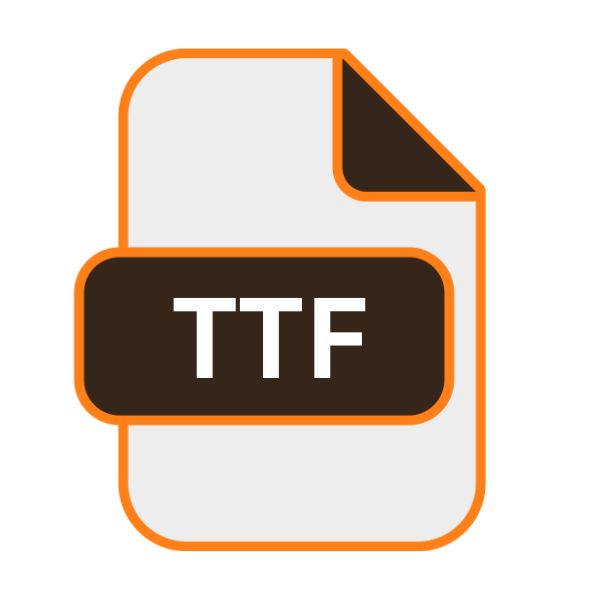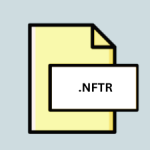.TTF File Extension

TrueType Font
| Developer | Apple |
| Popularity | |
| Category | Font Files |
| Format | .TTF |
| Cross Platform | Update Soon |
What is an TTF file?
.TTF files represent a cornerstone in the realm of digital typography, shaping the visual identity of written communication across various platforms.
Understanding its origin, history, technical specifications, and its advantages and disadvantages can provide invaluable insights into its significance in modern computing.
More Information.
Introduced in 1991, TrueType Font quickly gained traction due to its versatility and widespread support across various operating systems and software applications.
Its initial purpose was to provide a standardized format for digital fonts that could be reliably reproduced on both screen and print, ensuring consistent typographic quality across different devices and platforms.
Origin Of This File.
TrueType Font files, with the .ttf extension, emerged from the collaborative efforts of Apple and Microsoft in the late 1980s. They aimed to develop a scalable font format rivaling Adobe’s Type 1 fonts.
The result was a font technology that combined high-quality rendering with efficient memory usage, revolutionizing digital typography.
File Structure Technical Specification.
.TTF files comprise a structured format designed to encapsulate font data, including glyph outlines, metadata, and hinting instructions for precise rendering at different sizes and resolutions.
The format supports both outline and bitmap fonts, offering flexibility in font design and rendering methods. TTF files adhere to a precise technical specification that defines the organization of font data, enabling interoperability across different software and hardware environments.
How to Convert the File?
Converting TTF (TrueType Font) files to other formats or vice versa can be accomplished using various tools and methods tailored to specific operating systems. Here’s a detailed guide on how to convert TTF files:
1. Using Font Converter Software:
Windows:
- Windows users can utilize third-party font conversion software such as FontForge or online converters like Online Font Converter.
- Simply download and install the desired font converter software, then open the TTF file in the program.
- Choose the desired output format (e.g., OpenType, Web Open Font Format), and initiate the conversion process.
- Once the conversion is complete, save the converted file to your preferred location.
2. Command-Line Tools:
Linux:
- Linux users can leverage command-line tools like FontForge or the
fonttoolslibrary to convert TTF files to different formats. - Install FontForge or fonttools using your Linux distribution’s package manager (e.g., apt, yum).
- Use the command-line interface to navigate to the directory containing the TTF file.
- Execute the conversion command, specifying the input TTF file and the desired output format.
- Once the conversion process is finished, the converted file will be available in the specified location.
3. Font Book Application:
macOS:
- macOS includes the Font Book application, which allows users to manage and convert font files, including TTF files.
- Open Font Book from the Applications folder or by searching for it using Spotlight.
- Navigate to the TTF file you want to convert within Font Book.
- Right-click on the TTF file and select “Convert” from the context menu.
- Choose the desired output format (e.g., OpenType), and Font Book will convert the file automatically.
4. Font Converter Apps:
Android:
- Android users can explore various font converter apps available on the Google Play Store.
- Download and install a font converter app such as FontFix or Font Converter.
- Open the app and select the TTF file you wish to convert from your device’s storage.
- Choose the output format compatible with Android applications (e.g., TTF, OTF).
- Initiate the conversion process, and the app will generate the converted file.
5. Font Management Apps:
iOS:
- iOS users can utilize font management apps available on the App Store to convert TTF files.
- Download and install a font management app such as AnyFont or iFont.
- Open the app and import the TTF file you want to convert from your device’s storage or a cloud service.
- Select the desired output format (e.g., TTF, OTF) compatible with iOS applications.
- Proceed with the conversion process, and the app will generate the converted font file.
6. Online Conversion Tools:
- Alternatively, users can utilize online font conversion tools such as Online Font Converter or FreeFileConvert.
- Visit the website of the chosen online converter tool.
- Upload the TTF file from your device or provide a URL to the file.
- Select the output format and initiate the conversion process.
- Once the conversion is complete, download the converted file to your device.
Advantages And Disadvantages.
Advantage:
- Cross-Platform Compatibility: .TTF files are supported across various operating systems, including Windows, macOS, Linux, Android, and iOS, ensuring consistent font rendering across different devices and applications.
- Scalability and Quality: TrueType fonts maintain crisp and clear outlines even at different sizes and resolutions, making them ideal for both screen and print applications.
- Efficient Memory Usage: .TTF files are optimized for memory usage, minimizing the storage footprint without compromising on typographic quality, making them ideal for digital distribution and web typography.
Disadvantage:
- Limited Styling Options: Compared to modern font formats like OpenType, TrueType Font has limited support for advanced typography features such as ligatures, stylistic sets, and variable fonts.
- Complex Hinting Process: Achieving optimal rendering of TrueType fonts requires intricate hinting instructions, which can be time-consuming and labor-intensive for font designers.
- Compatibility Issues: Despite widespread support, older versions of operating systems and software may encounter compatibility issues with newer .TTF font features, necessitating fallback solutions or alternative font formats.
How to Open TTF?
Open In Windows
- Double-click the .TTF file.
- Windows will open the file in the default font viewer or font management application.
- Alternatively, you can right-click the file, select “Open With,” and choose a specific font viewer or editor if you have one installed.
Open In Linux
- Use a file manager to navigate to the .TTF file.
- Double-click the file to open it in the default font viewer or editor.
- Alternatively, you can use command-line tools like “FontForge” or the fonttools library to view or edit the font.
Open In MAC
- Double-click the .TTF file.
- macOS will open the file in the Font Book application by default.
- You can also right-click the file, select “Open With,” and choose another font viewer or editor if preferred.
Open In Android
- Transfer the .TTF file to your Android device.
- Open a file manager app on your Android device.
- Navigate to the location where the .TTF file is saved.
- Tap on the .TTF file to open it.
- Android will prompt you to install the font or open it with a compatible app if available.
Open In IOS
- Transfer the .TTF file to your iOS device.
- Install a font management app from the App Store if you haven’t already.
- Open the font management app and import the .TTF file.
- The app will install the font and make it available for use in compatible apps or system-wide.
Open in Others
- For other platforms or scenarios, you can use online font viewers or converters to open and view .TTF files.
- There are also specialized font management software and applications available for various operating systems, which offer advanced features for viewing, editing, and managing fonts.













